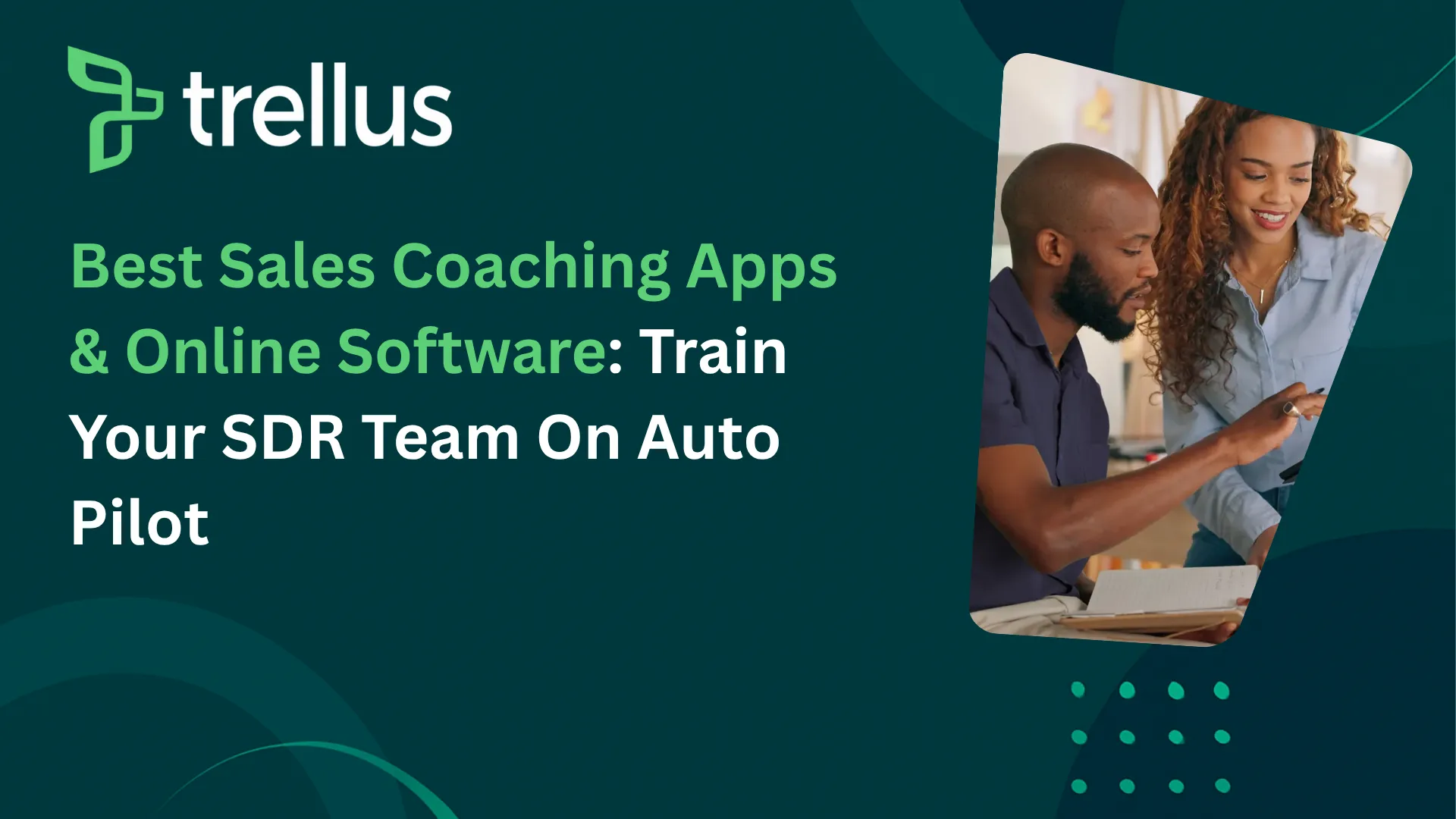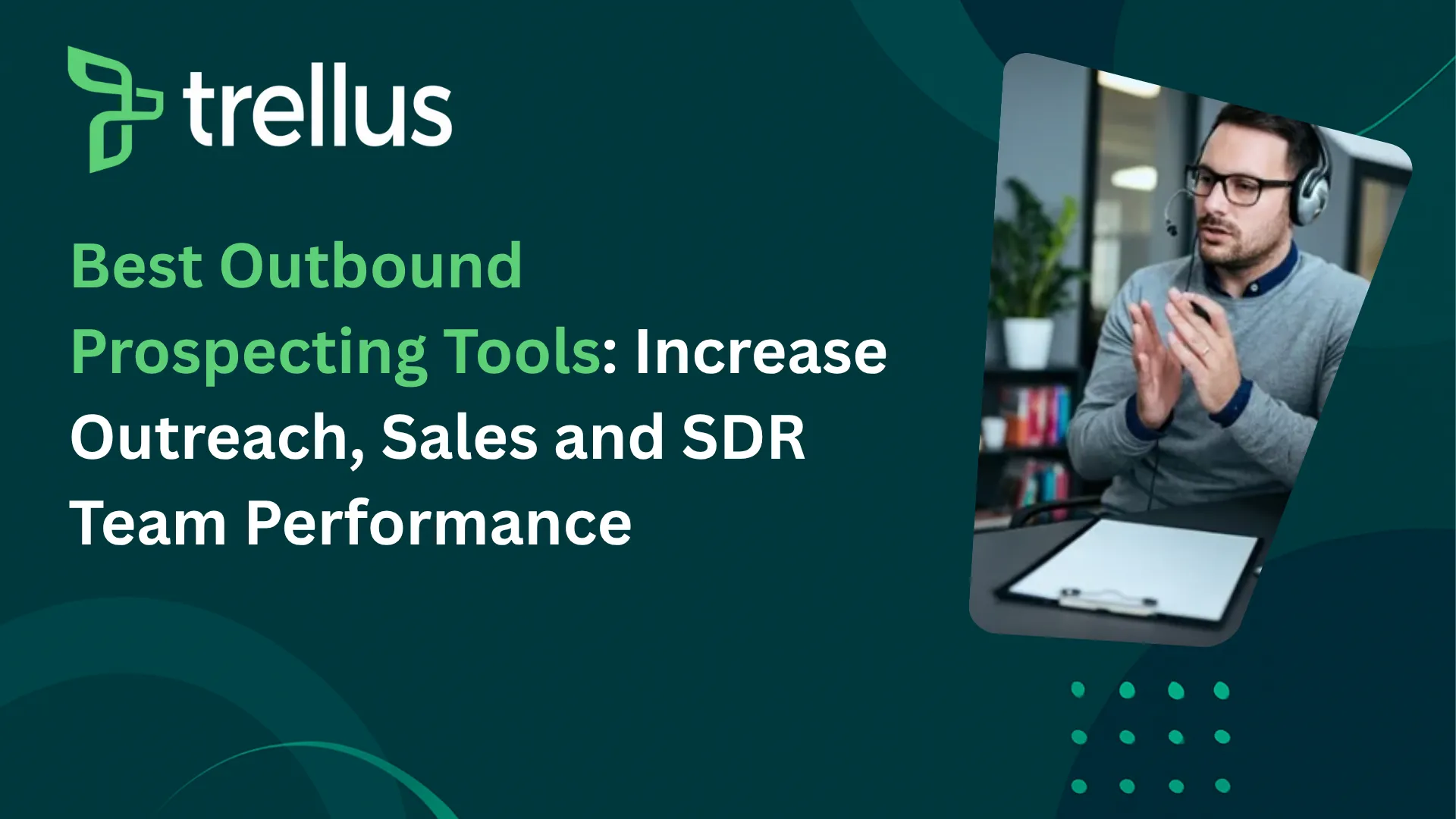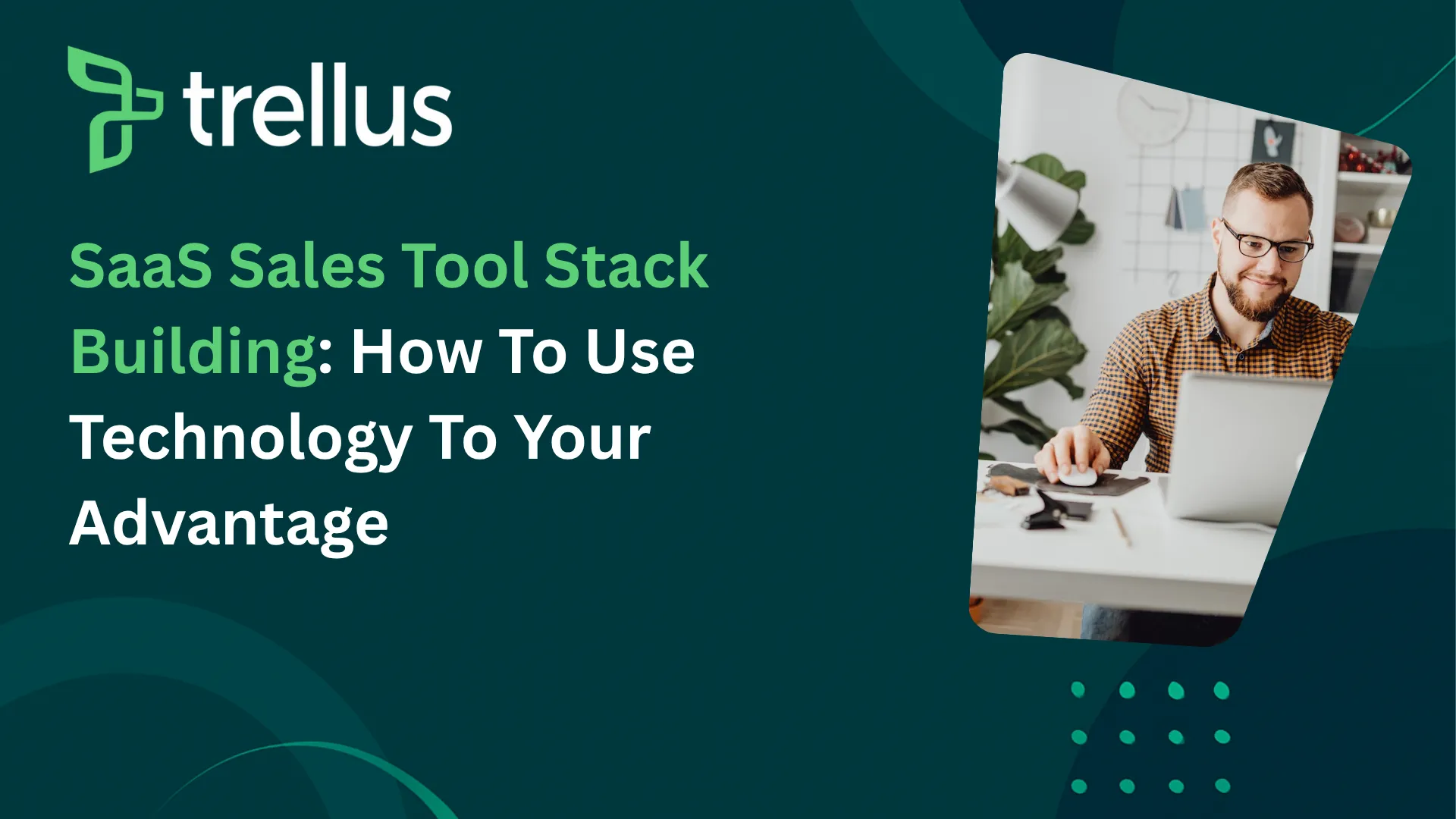
Our Top Picks


Sales reps in SaaS spend close to 65% of their time on tasks that don’t directly generate revenue—data entry, admin, research, and coordination.
That’s more than half the workweek consumed by things machines can do faster.
The problem isn’t effort; it’s the workflow architecture and the way things are executed eventually. Sales teams often operate with a patchwork of disconnected software, bundled with CRMs that don’t talk to engagement tools, prospecting platforms that don’t sync with reporting, and countless hours wasted copying data across systems.
What would be the way forward? Good question.
The solution is to design a sales stack not as a random toolkit but as a carefully engineered ecosystem. This sales stack needs to be unique to your business as per your internal processes, the way leads are secured, entire outreach campaigns, competitor analysis and whatnot.
So, from that point of view, if you are thinking about “reinventing” your competitors’ sales stack, it won’t work from a long-term operability perspective.
Think of it like building an operating system for revenue: tools connected through APIs, processes mapped to automation, and AI running in the background to cut hours of manual effort.
This isn’t just about buying saas sales tools. It’s about designing a dedicated sales stack architecture that turns technology into leverage. Done right, the result is more than 10 or 10+ hours a week freed up per rep—time that can be spent on demos, negotiations, and closing.
That’s what we’ll break down: a blueprint for building a high-performance SaaS sales stack, showing how to align technology with your funnel, what tools belong at each layer, how to wire them together, and how to prove ROI.
Along the way, we’ll highlight also how platforms like Trellus.ai are setting the bar for AI-orchestrated sales systems.
Architecting Your Stack: Aligning Technology with Your SaaS Sales Process
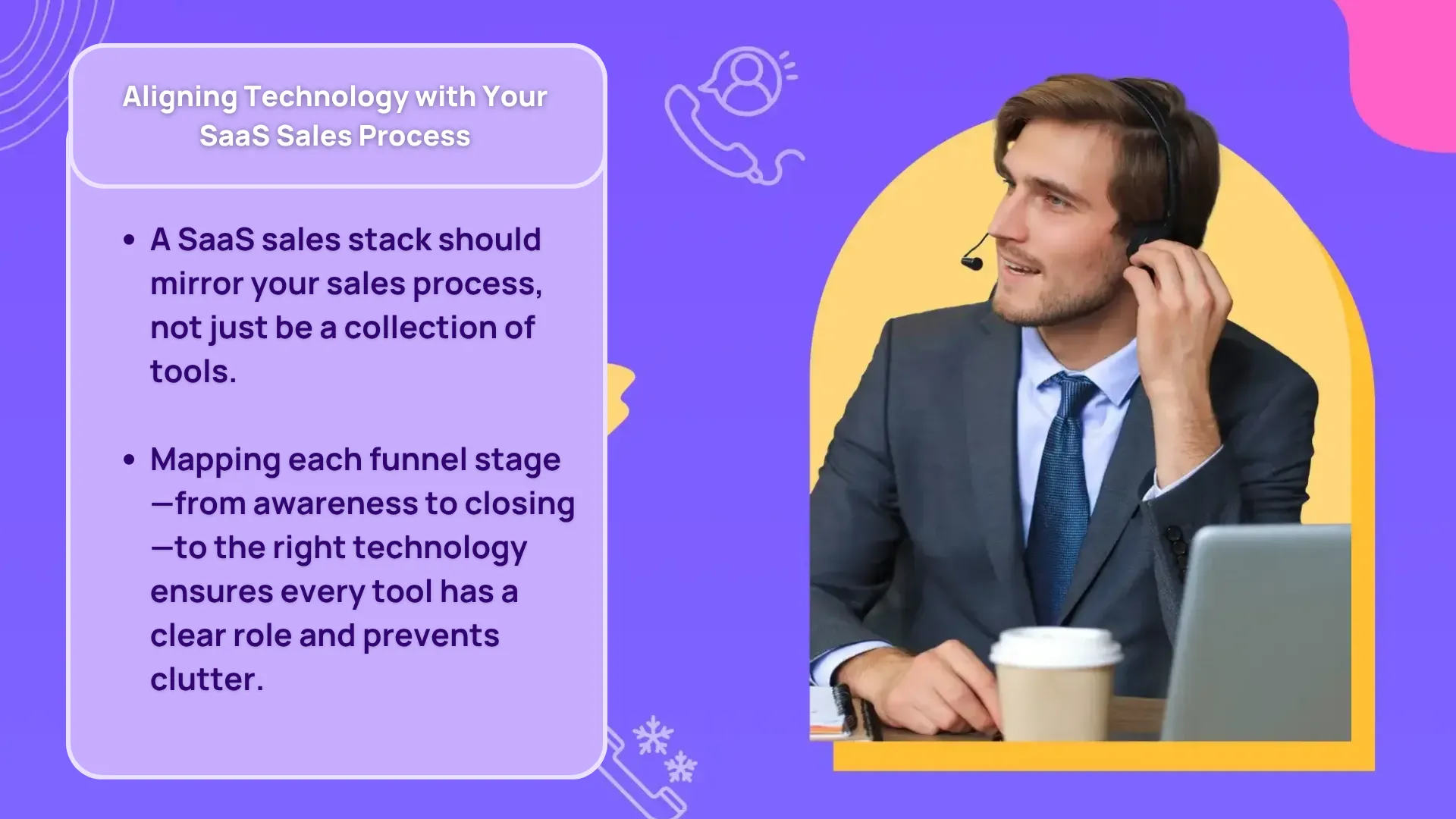
A sales stack isn’t just about the software you pick. It should be mapped to how your SaaS business sells. If you don’t define the process first, tools just add clutter.
Blueprinting Your SaaS Sales Funnel
Every SaaS company’s funnel looks a little different, but the stages are usually some variation of:
- Awareness
- Qualification
- Demo
- Negotiation
- Closing
Think of each stage as a module in a system. Awareness requires data ingestion tools; qualification requires enrichment and scoring; demos need scheduling and engagement automation; negotiation benefits from proposal and contract software; closing connects to billing and handoff systems.
A funnel diagram here works like a wiring plan for your stack—clarifying where each piece of technology plugs in.
Defining Your Go-to-Market (GTM) and SaaS Sales Process
Your GTM model dictates the stack. A product-led growth company leans heavily on product usage signals and lightweight outbound, while a sales-led SaaS needs robust prospecting, engagement, and forecasting tools. Hybrids blend both.
Once you have the model, document the process step by step. Treat it like API documentation for your sales team—clear instructions that tools can automate. Without this foundation, even the most advanced software won’t save time.
The Core Components of a High-Performance SaaS Sales Stack
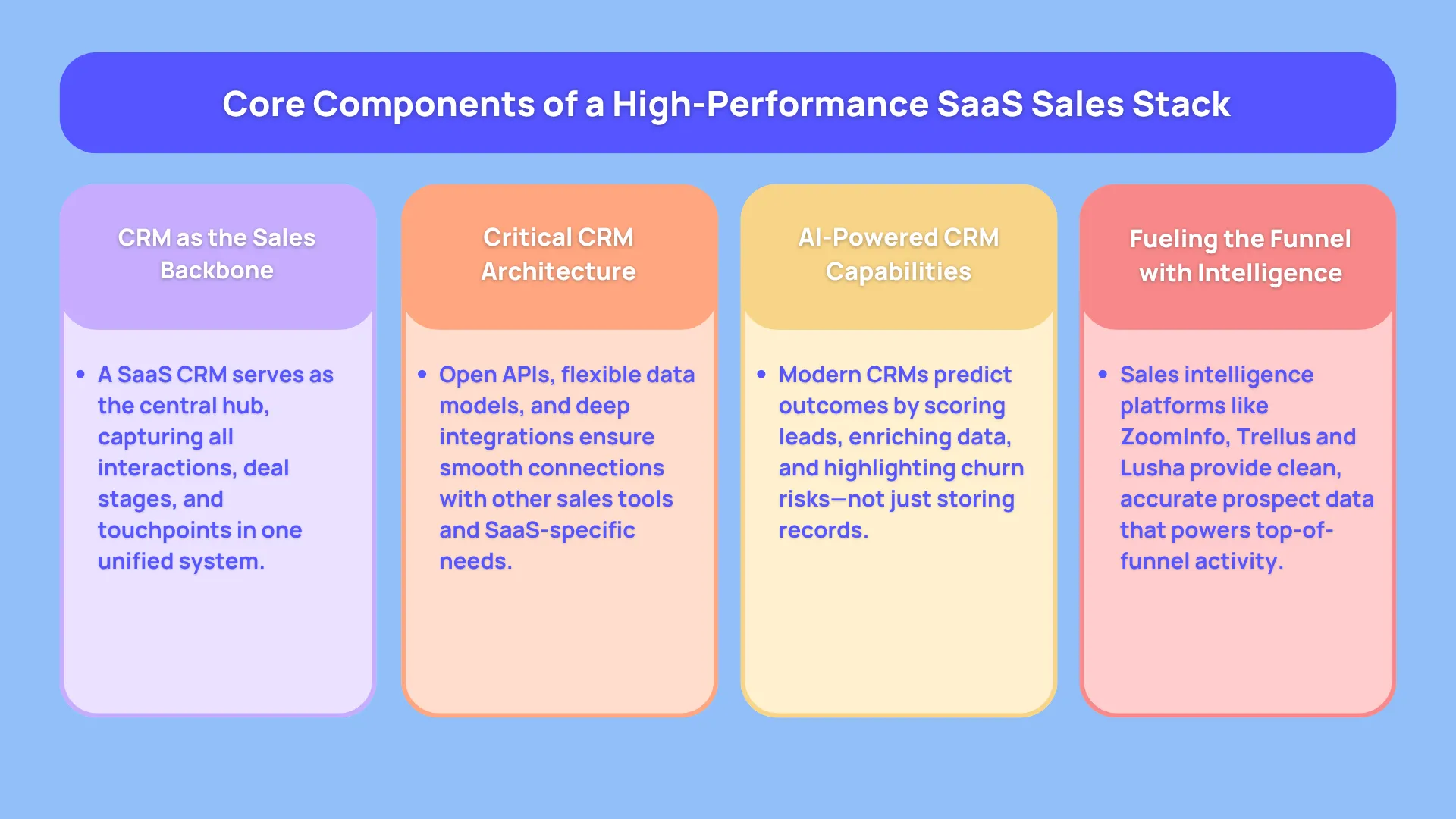
Now that the process is mapped, let’s look at the key layers of a modern sales stack.
The Central Nervous System: Your CRM for SaaS
Your CRM is the single source of truth. It houses every interaction, every deal stage, every touchpoint.
Key Architectural Considerations for a SaaS CRM
- Open APIs: so it connects cleanly with other tools.
- Flexible data models: custom objects for SaaS-specific needs like usage metrics or subscription details.
- Integration depth: so data flows without friction.
AI-Enhanced CRMs
Modern CRMs aren’t just passive databases. They score leads automatically, enrich missing data, and flag accounts at risk of churn. AI has turned them into prediction engines, not just record-keepers.
Top of Funnel Automation: SaaS Prospecting Tools & Intelligence
Feeding the funnel starts with clean, accurate data.
SaaS Sales Intelligence Tools
Platforms like ZoomInfo or Lusha act as your data ingestion layer—firmographics, technographics, contact details. They populate the funnel with raw inputs.
AI-Powered SaaS Prospecting Tools
This is where things move from static lists to dynamic signals. Intent data tools (e.g., Bombora) identify which companies are showing buying behavior. AI layers help score and prioritize, so your reps target accounts with the highest likelihood to convert.
The Engine of Execution: Sales Engagement & Automation Tools
This category is about turning data into action.
The Evolution of Sales Automation Tools
What started as simple email sequencing has matured into multi-channel orchestration: email, LinkedIn, calls, even SMS—coordinated in one cadence. A/B testing across these channels adds intelligence to outreach.
AI in Sales Engagement
AI now recommends the best time to send a message, personalizes emails at scale, and even reads replies for sentiment—flagging positive ones for immediate follow-up. This is where reps claw back hours lost to manual follow-up.
The Augmentation Layer: Sales Productivity Software
Beyond outreach, reps need tools that lighten their cognitive load:
- Conversation intelligence (Gong, Chorus.ai) transcribes calls and highlights objections.
- Meeting schedulers eliminate back-and-forth emails.
- Proposal and e-signature software speeds up contracting.
Each tool here shaves minutes from repetitive tasks, compounding into hours saved weekly.
From Tools to System: Integrating Your Sales Technology Stack
A collection of tools isn’t a system. Integration is what creates real automation.
The Role of APIs and Webhooks in Stack Architecture
APIs and webhooks are the connectors. Think of them as universal translators that allow tools to talk.
Example: when a lead is marked “Qualified” in your engagement platform, an API call creates a deal in the CRM automatically. No human clicks required.
iPaaS and Workflow Automation Platforms
Platforms like Zapier, Workato, or Make serve as the glue layer. They let you string together multi-step workflows without writing code.
Example:
- A customer signs up through Stripe.
- Clearbit enriches the data.
- A CRM record is created.
- The assigned rep gets a Slack notification.
That chain is invisible to the rep—but it saves hours.
Measuring the ROI of Your Stack: SaaS Sales Metrics That Matter
Without measurement, you can’t prove the stack is saving time or boosting revenue.
Beyond Activity: Measuring Sales Productivity
Vanity metrics like “emails sent” don’t tell the story. The better questions:
- How fast is the first touch on a new lead?
- What’s the lead-to-opportunity conversion rate?
- How long is the sales cycle?
Your stack should log these automatically, surfacing true productivity signals.
Tying Technology to Revenue: How to Increase SaaS Sales
Efficiency matters, but revenue is the ultimate outcome. Track how each layer of the stack impacts:
- Pipeline creation
- Win rates
- Customer Acquisition Cost (CAC)
An efficient stack lowers CAC, shortens cycles, and increases output per rep—all of which directly increase SaaS sales.
The Human Element: Building a SaaS Sales Team to Leverage the Stack
Technology amplifies people, it doesn’t replace them. The right team structure ensures the stack pays off.
Hiring for a Tech-Enabled Sales Floor
Look for reps who are tech-savvy, comfortable with data, and adaptable. They should view tools as extensions of their workflow, not obstacles.
The Role of the SaaS Sales Compensation Plan
Comp plans should reward outcomes driven by the stack. For example, incentivize fast response times or usage of engagement cadences, ensuring the technology isn’t ignored.
Top SaaS Sales Tools for Scaling Companies
- Sales Outreach: Use Trellus for unlimited and parallel cold calls with Ai conversational technology alongside to boost sales.
- CRM: HubSpot CRM (scalable, API-rich), Salesforce (enterprise flexibility).
- Engagement: Outreach, Salesloft—multi-channel, AI-driven personalization.
- Intelligence: ZoomInfo, Apollo—deep datasets plus integrations.
These are popular not just for features but for how well they plug into broader systems.
Conclusion
Building a SaaS sales stack isn’t about adding tools. It’s about systems design—connecting each layer so data flows, workflows automate, and AI augments human decision-making.
When designed as an architecture, the stack becomes a force multiplier: 10+ hours a week returned to every rep, more time for revenue-generating work, and a measurable lift in sales outcomes.
The future isn’t just automation; it’s orchestration.
Platforms like Trellus.ai are showing how AI can not only connect tools but actively manage the flow between them—delivering on the real promise of sales technology: less admin, more selling.




